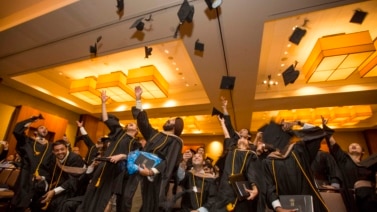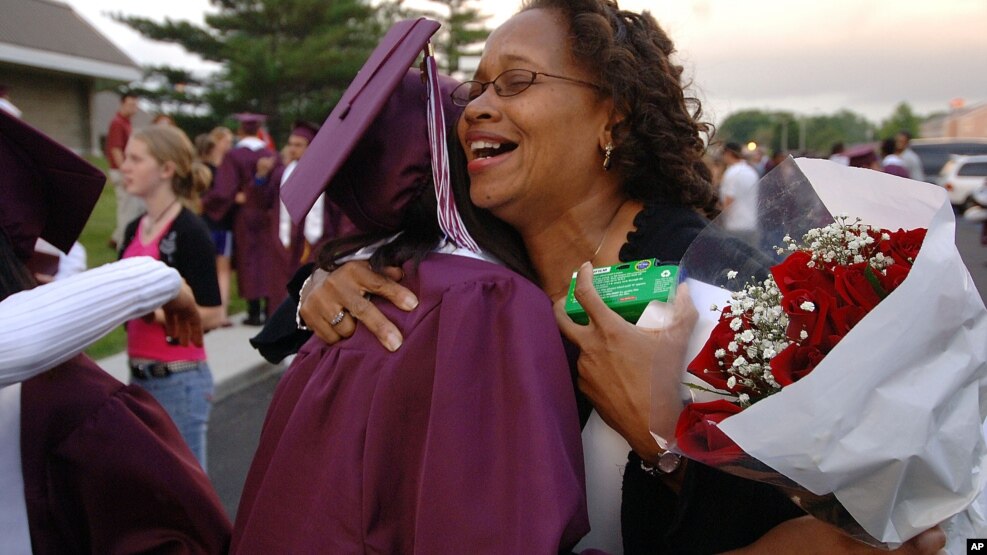
Emily Olivares was surprised when a friend told her she is $50,000 in debt after paying for four years of college.
“I almost had a heart attack,” Olivares said. “That's a lot of money.”
She has no such problem.
Her tuition for four years at Western Michigan University was about $40,000. But, a program called Kalamazoo Promise paid for it all.
Since 2006, a group of secret donors provided money so students who graduate from Kalamazoo public schools can attend a Michigan state college. The money pays tuition for students in part or fully.
“I don't think I would be in the same place in life right now if it wasn't for this program,” said the 22-year-old Olivares.
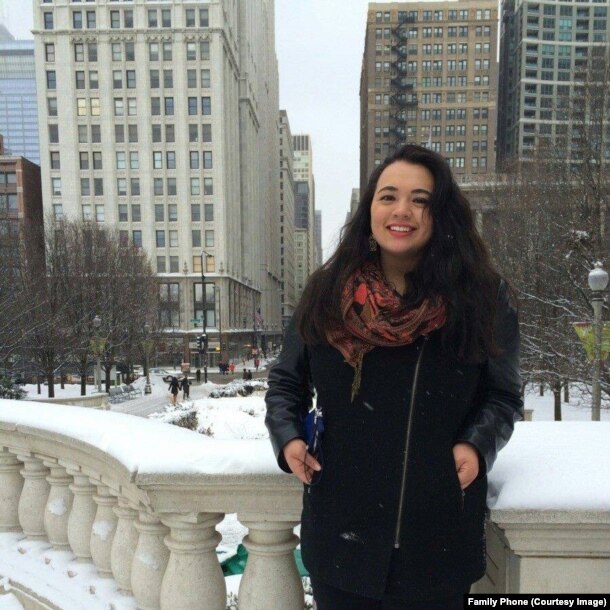
She recently graduated from Western Michigan University, and works for Kalamazoo Promise. In the future, she hopes to set up international study programs for college students.
Hillary Clinton's Proposed Tuition Program
The Kalamazoo program is now getting more attention because of Hillary Clinton. The Democratic candidate for president is proposing a free tuition program for the entire country. Clinton wants to provide free state college tuition for families with yearly incomes of up to $125,000.
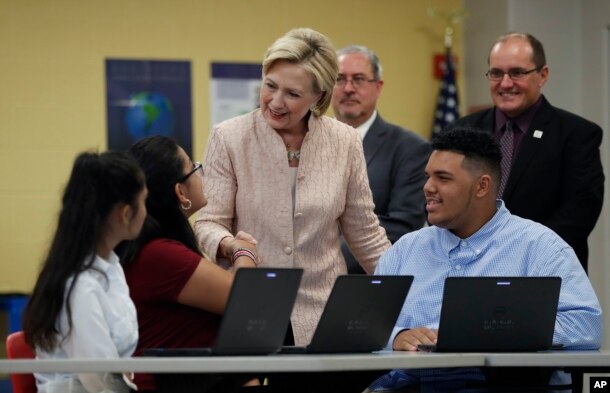
Republican Donald Trump's campaign website does not list a plan on college tuition. However, last year, Trump told The Hill newspaper that the federal government should not profit on student loans and should allow students to lower the amount of interest they pay.
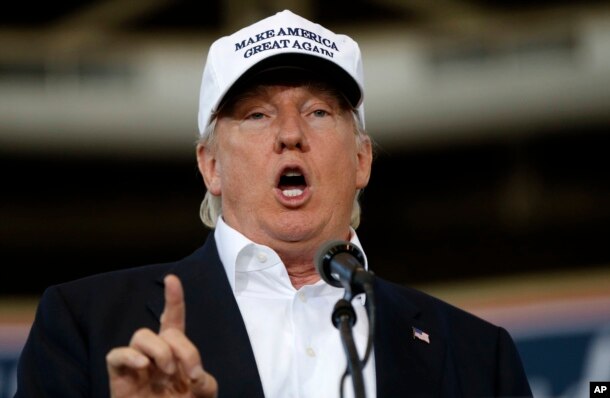
In Kalamazoo, the tuition aid program is praised as a program that makes a difference in the small city in America's Midwest. Kalamzoo has a population of 76,000 and is halfway between the cities of Chicago, Illinois and Detroit, Michigan.
Bob Jorth is the Kalamazoo Promise executive director. He said the city has about 25 percent more students attending college than it did 10 years ago, when the program began.
Kalamazoo is sending about 85 percent of its high school graduates to college. That percentage, Jorth said, is similar to the rate in much wealthier communities.
Research Group Says Promise Program Has Limits
But the Brookings Institution research group said in a 2015 report that the program has limitations. It found that only twenty percent of African-American high school graduates earned college degrees six years after graduation. Brookings said the overall college degree average for the city's public school graduates was forty percent.
What it shows, Brookings said, is that Kalamazoo “has not yet come close to resolving the problem of inequality of opportunity” for African-American children.
But several Kalamazoo Promise students said the program made a big difference for them.
Twenty-one-year-old Tinashe Chaponda is now attending Western Michigan University with a lot of help from Kalamazoo Promise
Not having to pay full tuition, means he does not have to spend his free time working at a paid job, Chaponda said. It has freed him to set up a non-profit group to help place students with groups needing volunteers.
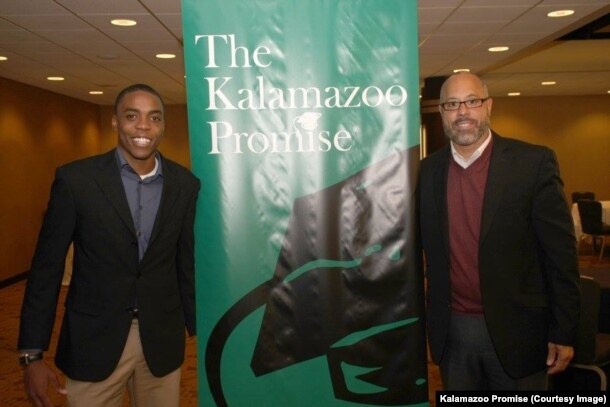
Chaponda came to Michigan from Zimbabwe in time to start 8th grade in Kalamazoo's school system. Today, he gets 70 percent of his tuition covered. Students who attend Kalamazoo public schools for all 12 years get their entire Michigan state college tuition covered.
Chaponda said his goal is to return to Zimbabwe some day and run for president of the southern African country.
“The Promise program allows me to focus on college and still have extra time to start my non-profit,” Chaponda said. “I feel if people are investing in me, the least I can do is give back to the community in some way.”
Other Cities Offer Tuition Aid
Kalamazoo is not the only place with free- or reduced-cost tuition for public school graduates.
The Upjohn Institute for Employment Research reported that about 30 U.S. communities have created similar programs. One of the largest is in Pittsburgh, Pennsylvania.
The Upjohn Institute studied graduation rates in Kalamazoo in 2015. It said there was a 12 percent increase in people earning college degrees within six years of high school graduation.
The U.S. Education Department says that is important for economic reasons. People who graduate from college in America earn $1 million more, over their lifetime, than those who only graduated from high school.
The Promise program also means Kalamazoo public school graduates can attend state colleges without owing a lot of money. The average student debt for 2016 college graduates is $37,000, according to the website, StudentLoanHero.com.
Not everyone supports the idea of free tuition. Norbert Michel, writing for the conservative Heritage Foundation, said free tuition can lead to higher education costs.
“The core problem is that they remove the paying customer -- in this case the student -- from the equation,” Michel said. If students and their parents are paying they will work to keep costs down, he said.
Students Know 'This Is Something Special'
Michael Rice is superintendent of Kalamazoo Public Schools. He said, teachers start talking about the program in early in a student's education.
“By sixth grade students understand that this is something special and unique,” Rice said. He said the program has helped increase test scores for students who know they and their families will be able to afford college.
Jorth said it is too early to say what will happen to the program he leads if Clinton is elected and gets her tuition plan approved by Congress.
When Kalamazoo Promise was announced in late 2005, a press release said the donors wanted to give people a reason to remain in Kalamazoo or move to the city. They also wanted a more educated workforce. But the press release did not say who the donors are.
Since then, Jorth said local residents have been trying to guess who in Kalamazoo has enough money to provide the $80 million given the program since 2006.
The secret donors make Jorth's job pretty special. He may be one of the few people who can say, “I don't know who I work for.”
I'm Bruce Alpert.
Bruce Alpert reported this story for VOA Learning English. Mario Ritter was the editor.
We want to hear from you. Write to us in the Comments Section and share your views on our Facebook Page.
Words in this Story
heart attack -- n. a sudden painful and dangerous condition in which your heart stops beating properly
tuition -- n. money that is paid to a school for the right to study there
entire -- adj. complete or full
focus -- v. to put most of your attention on a matter or subject
graduate -- n. a student who complete his or her studies at a school
core -- adj. the central or major issue
equation -- n. the issue at hand
guess -- v. to form an opinion or give an answer about something when you do not know much or anything about it
